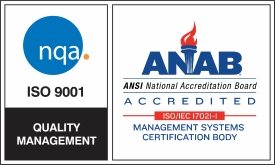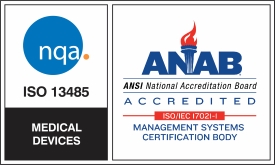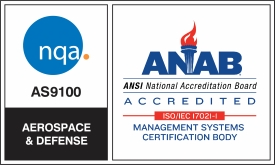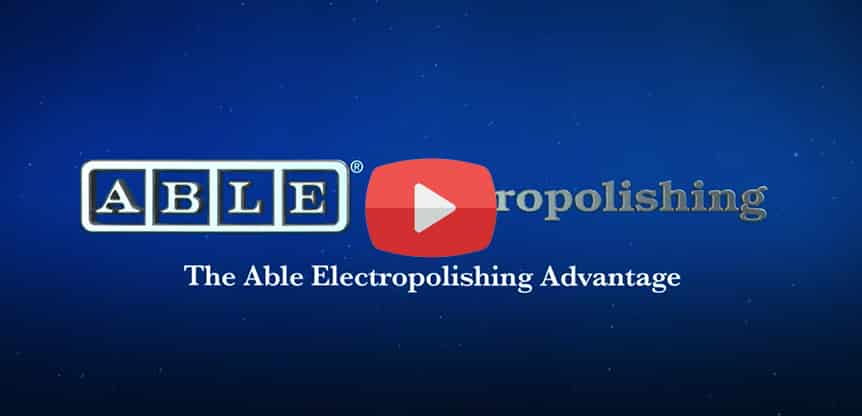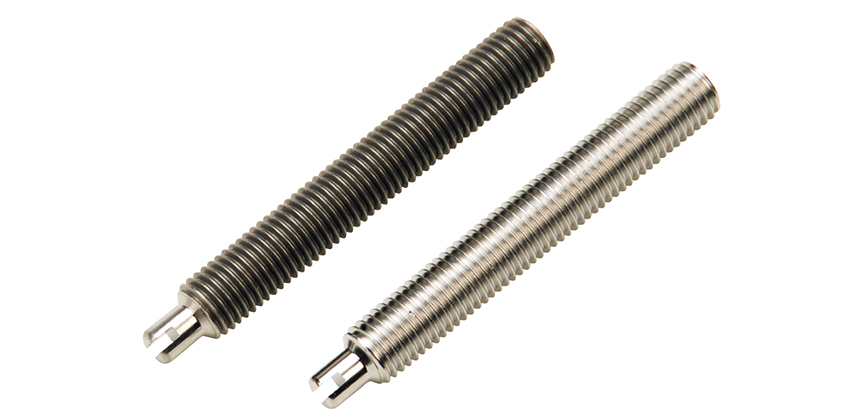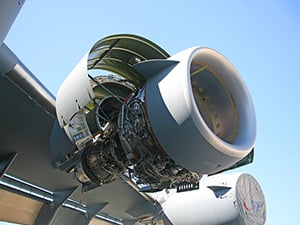
Crafting aerospace components demands precision down to the microscopic level. Through meticulous removal of contaminants and enhancement of corrosion resistance, metal finishing techniques such as passivation help ensure part performance and longevity.
What is passivation?
Passivation is a chemical process designed to enhance the corrosion resistance of metals by removing free iron from the surface and fostering the growth of a thin oxide layer. This protective layer acts as a barrier against environmental factors that could lead to corrosion, extending the lifespan of the component.
Unlike electropolishing — which also creates a passive layer but through an electrochemical process — passivation does not alter the physical dimensions or aesthetics of the part.
The role of pre-cleaning
Before passivation begins, parts must be free of lubricants, adhesives and other contaminants. At Able Electropolishing, we employ advanced pre-cleaning processes, including vapor degreasing and reverse alkaline cleaning, to remove any oils or residues. This preparatory step is necessary to achieve optimal passivation results, particularly in industries such as aerospace, where precision and performance cannot be compromised.
One of the most common culprits of an imperfect metal finish is free iron, which develops from the transfer of material from carbon steel tooling used in machining to stainless steel components. This cross-contamination introduces foreign particles that can compromise the integrity of the metal surface, making it more susceptible to corrosion. Passivation effectively removes these superficial iron deposits, but doesn't remove metal surface material as electropolishing does.
Choosing between ep & passivation
The decision between electropolishing or passivation depends on the specific requirements of the aerospace component. For parts needing a higher level of corrosion resistance, electropolishing may be the preferred method. However, for applications where maintaining the component's original dimensions and appearance is critical, passivation offers an effective solution without altering the part's physical properties.
Nitric Acid vs. Citric Acid Passivation
Within passivation, both nitric and citric acid baths can achieve the desired protective oxide layer. While nitric acid has a reputation for being more effective, the results are quite similar. However, some prefer citric passivation for its environmental benefits and sustainability considerations.
Able provides both nitric acid and citric acid passivation and can process per AMS 2700, ASTM A967 and ASTM A380 specifications.
Aerospace Applications & Materials
Aerospace components subjected to passivation vary in size, but larger parts are common. Materials typically include various grades of stainless steel, such as the 300 and 400 series, alongside other precipitation-hardened materials like 15-5 and 13-8 stainless steels. These high-value materials are chosen for their strength and corrosion resistance and require careful handling to avoid introducing vulnerabilities during machining and finishing.
The Able Electropolishing Difference
With an automated German-engineered degreasing system and compartmentalized carriers for rack-passivation, Able ensures that parts undergo treatment without risking damage from part-to-part contact.
This attention to detail extends to our flexible service offerings, including standard 5-day turnaround times with options for expedited next-day or two-day delivery.
Our team is dedicated to pushing the boundaries of metal finishing technology and results. Our expertise in both electropolishing and passivation processes allows us to offer tailored solutions that meet the stringent demands of the aerospace industry, ensuring that every component we treat is optimized for performance, longevity, and reliability.
